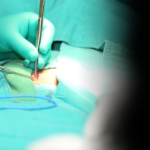
Comparing All Weight Loss Surgery Options: Sleeve Gastrectomy, Intragastric Balloon, and Gastric Bypass
Surgical treatments have become effective instruments in the fight against obesity, as standard weight management methods frequently fail to provide considerable and long-lasting weight loss. Among the many surgical treatments available, the installation of an intragastric balloon, sleeve gastrectomy, and gastric bypass surgery have received significant attention for their effectiveness in facilitating weight loss and enhancing metabolic health. We will go in-depth into the workings, surgical methods, results, dangers, and factors related to each of these weight reduction operations in this thorough investigation, giving people a thorough grasp to help them make decisions.
1. Procedure for Gastric Bypass:
Mechanism of Action: In order to cause weight loss, gastric bypass surgery combines malabsorptive and restrictive mechanisms. The treatment minimises the amount of food ingested and the amount of nutrients and calories that are absorbed by rerouting a part of the small intestine and generating a smaller stomach pouch.
Restrictive Component: By dividing the stomach into a larger lower region and a smaller upper pouch, the procedure limits how much food may be eaten at once. This promotes weight loss by causing early satiety and a decrease in food consumption.
Malabsorptive Component: Gastric bypass surgery lessens the absorption of nutrients and calories from food by skipping a portion of the small intestine. This component of the process aids in further weight loss and metabolic changes.
Surgical Method: Generally, there are a few essential phases in the surgical method for gastric bypass surgery:
Stomach Partitioning: The stomach is divided by the surgeon to form a tiny pouch at the top that will now be used as a new food reservoir. Measuring around the size of a walnut, this pouch has a limited capacity to store food.
Rerouting of the small intestine: The newly created stomach pouch is attached to the lower end of the divided small intestine. This avoids the upper section of the small intestine and a portion of the stomach.
Reconnection: A lower section farther down the digestive tract receives the upper section of the split small intestine reattached, allowing digestive juices to mingle with food and facilitating nutrients absorption.
Advantages:
Significant and Sustained Weight decrease: Gastric bypass surgery usually produces a significant and long-lasting weight decrease. After surgery, patients frequently lose more than 50% of their excess body weight in the first year.
Resolving Comorbidities: After gastric bypass surgery, many people with obesity-related medical disorders, including type 2 diabetes, hypertension, and obstructive sleep apnea, see improvements or remissions.
Long-term Success: Patients can sustain their weight loss and have improved quality of life for an extended period of time by adhering to dietary and lifestyle changes.
Dangers and Things to Think About:
Nutritional deficits: The malabsorptive part of gastric bypass surgery may result in lifelong supplementation and monitoring due to vitamin and mineral deficits.
Syndrome of Dumping: Dumping syndrome is a condition that occurs when food moves quickly from the stomach pouch into the small intestine. It is typically brought on by eating high-fat or sugary foods and is characterised by symptoms like nausea, vomiting, sweating, and diarrhoea.
Complications: Following gastric bypass surgery, there is a danger of infection, blood clots, gastrointestinal leaks, and ulcers at the site of intestinal connections, just like with any surgical treatment.
2. Surgery for Sleeve Gastrectomy:
By shrinking the stomach, sleeve gastrectomy surgery mostly acts as a restricting device. Furthermore, the process modifies intestinal chemicals that regulate appetite, which helps to promote better fullness and less hunger.
Surgical Procedure: The following actions are involved in the sleeve gastrectomy procedure:
Reduction of the Stomach: Approximately 80% of the stomach is removed by the surgeon, leaving behind a banana-shaped sleeve-shaped pouch or thin tube. The amount of food that can be eaten at once is restricted by this reduction in stomach size.
Preserving Digestive Tract Continuity: Sleeve gastrectomy does not need rerouting the intestines, in contrast to gastric bypass surgery. The stomach’s natural outflow is unbroken, maintaining the digestive tract’s continuity.
Advantages:
Effective Weight Loss: Patients who have a sleeve gastrectomy usually lose 50% or more of their extra body weight in the first year following surgery. This is a significant and quick weight loss outcome.
Decreased Risk of Nutritional Deficiencies: Compared to gastric bypass surgery, there is a lower risk of malabsorption and consequent nutritional deficiencies because the operation does not include intestinal rerouting.
Improvement in Comorbidities: After a sleeve gastrectomy, many patients see a resolution or improvement in obesity-related illnesses such type 2 diabetes, hypertension, and sleep apnea.
Dangers and Things to Think About:
Long-term complications: Although sleeve gastrectomy is thought to be safe in most cases, there is a chance of developing strictures, leaks, and reflux.
Irreversibility: The stomach cannot be made whole again after a section of it has been removed. It is thought that a sleeve gastrectomy is an irreversible operation.
Possibility of Weight Regain: If dietary and lifestyle changes are not maintained after surgery, some patients may eventually have a progressive increase of weight.
3. Insertion of Intragastric Balloon:
Mechanism of Action: By taking up space in the stomach and producing a feeling of fullness, intragastric balloon implantation is a minimally invasive treatment that reduces food consumption.
Procedure: The following steps are included in the intragastric balloon placement procedure:
Balloon insertion: A deflated silicone balloon is passed via the mouth and into the stomach using an endoscope.
In order to take up space and produce a feeling of fullness, the balloon is inflated with saline solution once it is inside the stomach.
Temporary Placement: An same endoscopic operation is used to remove the balloon after it has been in the stomach for a certain amount of time, usually six months.
Advantages:
Non-surgical Approach: For those who would rather have a less intrusive operation, intragastric balloon implantation provides a minimally invasive alternative to surgical methods.
Fast Weight Loss: After balloon implantation, patients usually lose a large amount of weight in the first few months, averaging between 10% and 15% of their total body weight.
Reversibility: The implantation of intragastric balloons is reversible, unlike surgical methods, meaning that they can be removed whenever desired.
Dangers and Things to Think About:
Temporary Effectiveness: If lifestyle modifications are not kept up after the removal of an intragastric balloon, weight gain may occur. The weight loss resulting from intragastric balloons is just momentary.
Multidisciplinary Approach:
Regardless of the chosen procedure, successful weight loss surgery outcomes often rely on a multidisciplinary approach involving collaboration between surgeons, dietitians, psychologists, and other healthcare providers. Pre-operative evaluation, thorough patient education, and post-operative support are crucial components of comprehensive care to optimize outcomes and ensure long-term success.
Sleeve gastrectomy, intragastric balloon implantation, and gastric bypass surgery are three different ways to lose weight, each with pros, disadvantages, and factors to weigh. Anyone considering weight reduction surgery must have a thorough understanding of the causes, surgical methods, results, and patient selection criteria. Getting advice from a trained healthcare professional and going through a comprehensive pre-operative assessment are essential stages in choosing the best alternative based on personal preferences, needs, and health. In the end, deciding whether to have weight reduction surgery should be done in concert with other people, with the goals of reaching long-term weight loss and enhancing general health and wellbeing.



